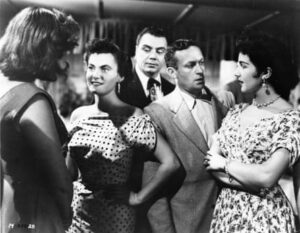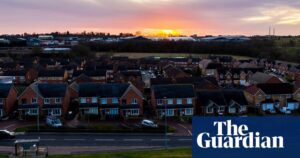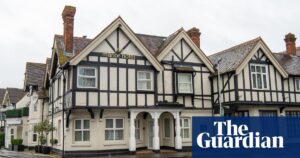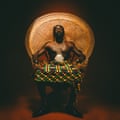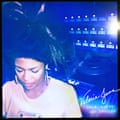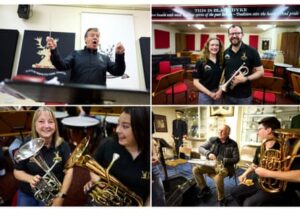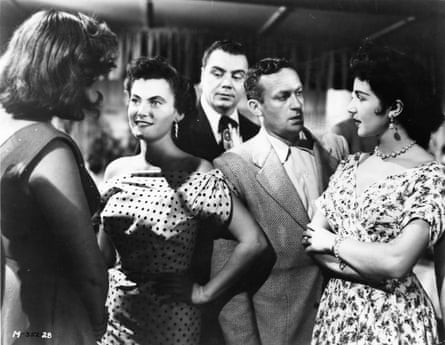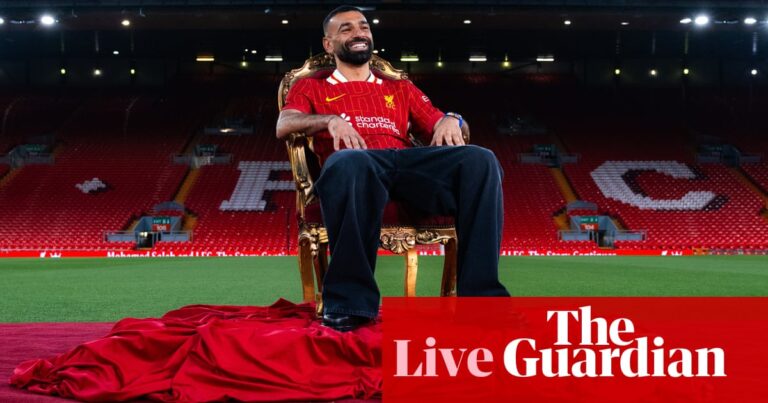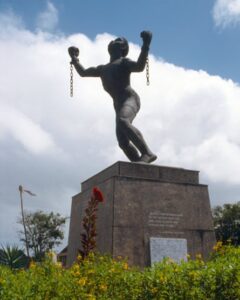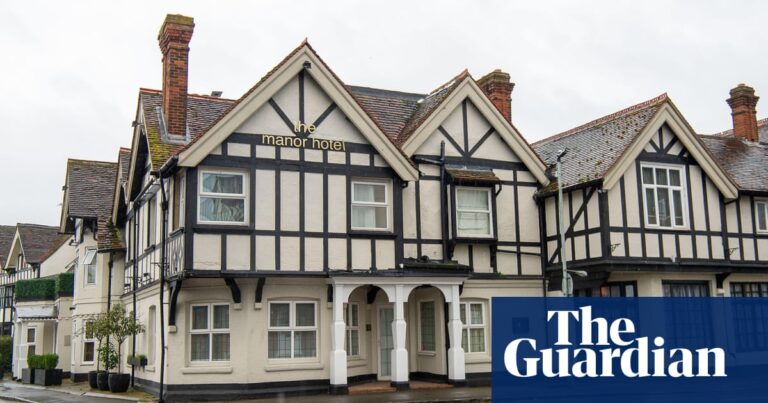When Harry Harrison first saw the white paper for the criminal justice and public order bill at the end of 1993, he couldn’t believe what he was reading. Harrison was the 27-year-old co-founder of Nottingham’s DiY sound system, so-called house music anarchists, who were known for throwing joyful free parties in fields and forests, quarries and squats. Now those gatherings could be criminalised and, for the first time, the music he played was being legally codified as “sounds wholly or predominantly characterised by the emission of a succession of repetitive beats”. “It was almost like a surrealist prank,” he says now. “I said: ‘Is this real?’ It was a crazy mixture of the sinister and the absurd.”
The 179-page bill was a hotchpotch of measures, from updating obscenity law and lowering the age of consent for gay men to restricting the right to silence when arrested and enabling the collection of DNA samples. Andrew Puddephatt, then director of the civil rights group Liberty, calls it “a Christmas tree bill. You bung a lot of different issues into one big bill as a way of securing parliamentary time.” At the time, Puddephatt described it as “the most wide-ranging attack on human rights in the UK in recent years”.
When most protesters talked about the criminal justice bill (CJB) they meant “part V public order: collective trespass or nuisance on land”. The notorious “repetitive beats” clause painted it as an anti-rave bill, but that was only the most eye-catching component. The new offences of aggravated trespass and trespassory assembly restricted the movement of travellers (a loose group comprising both ethnic Travellers and “new age” travellers), squatters, road protesters and hunt saboteurs, as well as sound systems. The CJB was an efficient means for John Major, the then prime minister, and Michael Howard, the then home secretary, to appear tough on law and order, soothe the brows of rural Tories and restrict protest, safe in the knowledge that the groups affected had few friends among the press, politicians and public.
The more conspiratorially minded reading is that the government sought to nip in the bud a potentially dangerous coalition of young people who lived outside the system – but it backfired. By targeting so many groups at once, the CJB strengthened that alliance, turning loose connections into steel bonds. Overlapping with the growing movement against road-building, 1994’s anti-CJB campaign filled central London with ravers, turned city streets into art installations, occupied Michael Howard’s garden and made a battlefield of Park Lane. It was the UK’s most exciting collision of pop culture and protest since 1968 – young, creative, colourful, noisy – and its legacy is still with us 30 years later. It established strategies of dissent that went on to inform subsequent campaigns, from Reclaim the Streets to Occupy to Just Stop Oil.
“It was an explosion of dissent,” says Camilla Berens, who was at the heart of the campaign. “A lot of people said Michael Howard did us a favour – he brought a whole generation of outsiders together.”
The root of the CJB was a moral panic about the “unholy alliance” forged between ravers and travellers at the Castlemorton Common festival in May 1992. “They have little in common,” said one senior police officer, “except music, parties, perhaps drugs, and a willingness to defy authority.”
The travellers had experienced a rough few years since the Battle of the Beanfield on 1 June 1985, when police demolished a 140-strong convoy heading for the Stonehenge free festival. The Public Order Act 1986 then gave the police new powers to evict encampments, forcing many travellers to move to Europe or come off the road. “It basically ended up as a refugee column, going from place to place,” says Alan “Tash” Lodge, a former traveller and Beanfield witness who has been photographing protests for 50 years. “With the law, the police action, the whole thing went down the tube.”
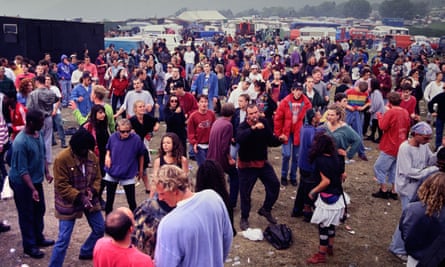
At the 1990 Glastonbury festival, however, the travellers connected with a new wave of renegade rave sound systems that had begun throwing free parties in squats and warehouses. The sound systems latched on to the old free festival calendar, creating a thrillingly new alloy of the urban and the rural, the ancient and the futuristic. “It was a second wind to a lot of us,” says Lodge. “Suddenly there was hope again.”
“Coming out of the clubs and into the woods was a significant move,” says the journalist CJ Stone. Now a retired postman, in the 90s he chronicled the scene in his Guardian column. “All of a sudden you see yourself as enmeshed in nature, and the parties as an expression of nature itself. The spiritual element felt revolutionary.”
The two most famous free party sound systems were DiY and Spiral Tribe. “It was like the Beatles and the Rolling Stones,” jokes DiY’s Harry Harrison, who is now a social worker in Wales. “We had a healthy rivalry.” Both systems saw their project as bigger than music. “We were young, radical, fearless and relentless,” Harrison says. “We came from a background of animal rights protests, anarcho-punk and free festivals. I guess we wanted to provide an ideal for living.”
Emerging from London squats, Spiral Tribe were self-styled “techno terrorists” who threw parties almost constantly. “To tell you the truth, I don’t ever remember sleeping,” says co-founder Mark Harrison (no relation). “We were on a mission.” Having attended Stonehenge as a teenager, Harrison saw free parties as a liberating, utopian force: taking back common land with the sound of the future. “We weren’t a bunch of dirty, rotten caners. We felt, maybe naively, that we were bringing something of great worth to society.”
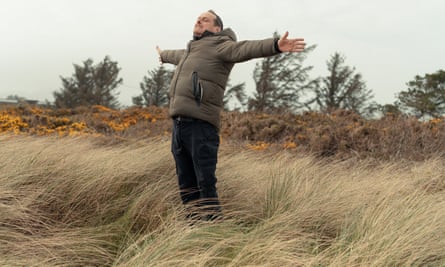
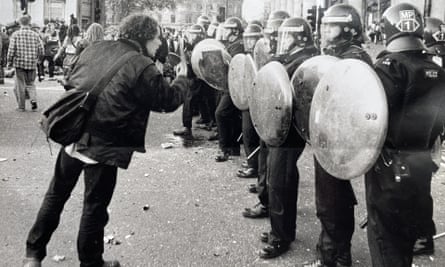
The free party scene exploded in summer 1991, primarily in the south-west, but there were signs that this merry lawlessness could not last. “As we came into 1992, we did sense a crackdown looming,” says Harry Harrison. “It was growing exponentially and it was clearly about to escalate out of control.”
Nobody planned for tens of thousands of ravers to descend on Castlemorton Common in the Malvern Hills. A convoy of revellers looking for a site for the Avon free festival had been moved on several times when, on 22 May, West Mercia police allowed them on to the common, having no idea how big the party would get. Spiral Tribe were hiding out in a Welsh forest, “battered and bruised” after a savage police raid on a warehouse rave a month earlier. They got the call and headed east. “All these officers in shirt sleeves were waving and smiling,” Mark Harrison recalls. “We were very confused. It felt like a trap. But in all honesty, I don’t think it was intended as such.”
The unprecedented scale of Castlemorton was largely a media-driven phenomenon. The more outraged attention it received (the Daily Telegraph denounced it as a “hippy siege”), the more people came. At its peak, there were between 20,000 and 40,000 people – one of the UK’s largest free gatherings since the last Stonehenge free festival in 1984. Castlemorton was effectively a self-governing, 24-hour pop-up town, with its own power, lighting, catering and accommodation.
Residents complained about the traffic, litter, dogs and noise. Somebody fired a distress flare at a police helicopter. There were tensions, too, between longtime travellers and fly-by-night ravers. “I was going round yesterday at 4am burying their shit,” one traveller told the Guardian. “They don’t seem to know how to use a shovel.” For all that, there were only a few dozen arrests, mostly for minor drug offences.
Spiral Tribe weren’t the loudest sound system, because their usual rig had been trashed in the police raid, but they had targets on their backs. They were also the last to leave, on 29 May, so there was no safety in numbers. The police swooped, impounded vehicles and arrested 13 people for conspiracy to cause a public nuisance. “They were building Spiral Tribe into this unstoppable dark force so they could bring in the criminal justice bill, which wasn’t just about repetitive beats,” says Mark Harrison. “We were billed as folk devils.” The police also raided Spiral Tribe’s squats. “They were looking for me for a couple of weeks,” recalls music producer Lol Hammond, of Spiral Tribe and the Drum Club. “We were in the flat with the lights off, making out we weren’t in. For me, it was either get arrested or go legal.”
The backlash to Castlemorton was immense. On 29 June, local MP Michael Spicer absurdly characterised the festival as an “invasion” with the “strength of two motorised army divisions” and “a highly sophisticated command and signals system”. John Major then targeted travellers in his autumn party conference speech: “New age travellers? Not in this age. Not in any age.” Ministers had already been talking about cracking down on squatters and travellers. Castlemorton provided the perfect excuse.
In March 1993, Kenneth Clarke, then home secretary, announced new proposals to amend the 1986 act to outlaw “illegal large raves”. Under his successor, Michael Howard, the criminal justice bill was included in the Queen’s speech on 18 November and published as a white paper in December.
The members of Spiral Tribe returned to the UK from their new base in France to stand trial in Wolverhampton on 10 January 1994. “The prosecutor was larging us as these techno-pagans from hell,” says Mark Harrison. “I think the jury realised it was a load of bullshit. Even the cops seemed reluctant to give evidence against us.” It cost the crown millions to reach the conclusion that Spiral Tribe could not be found guilty under existing laws.
On the trial’s second day, the bill passed its second reading in the Commons. The Labour party abstained, its hawkish shadow home secretary Tony Blair refusing to appear soft on crime. Opposition would not come from Westminster.
CoolTan Arts in Brixton, south London, took its name from its original home, an old suntan lotion factory, but by 1994 it was based in a defunct unemployment benefit office whose clients had once included a young John Major. It was run by Shane Collins, a Green party activist who had joined the Earth First! protest camp against the M3 extension at Twyford Down, in Hampshire, and then, after he was arrested and banned from the site, co-founded its urban equivalent, Reclaim the Streets. All of these groups, and more, worked out of CoolTan, an activist hub with offices, a cafe and two halls for fundraising club nights.
At 7.30pm on Wednesday 12 January 1994, about 40 representatives of groups affected by the CJB came together at CoolTan under the deliberately cryptic name the Interactive Diners Club to discuss coordinated resistance. One of the organisers was Camilla Berens, a young journalist who covered the intersection of countercultural tribes in her magazine Pod. “I came up with this term ‘DIY culture’ to explain what my generation was doing below the surface of mainstream life,” she says. “We were all outsiders in one way or another. We didn’t buy into the system we were presented with.”
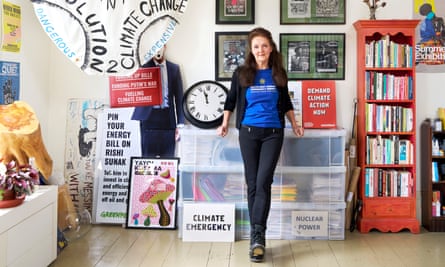
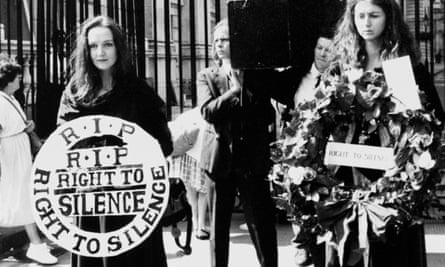
The Interactive Diners Club was soon formalised as the Freedom Network, with Berens as its media spokesperson. Young activists politicised by the poll tax or Twyford Down mingled with veterans of Beanfield and Greenham Common. “The bill definitely brought people together,” says Chris Cocking, a sociology lecturer at the University of Brighton who was then a 23-year-old Twyford Down protester. “It felt that the subculture was under attack. This politicisation made people realise it didn’t just affect them, it affected others. It was almost like a friendly allied country sending delegations.” He recalls the movement’s initial naivety with a grim smile. “Some people were even saying: ‘Oh, we’ll appeal to the Queen, we’ll get her to refuse to sign it off!’”
Soon there were roughly 90 Freedom Network branches and 200 anti-CJB groups around the country. The hubs were squatted community centres like CoolTan, the Rainbow Centre in Kentish Town, Exodus in Luton, Justice? in Brighton. For two months, the Freedom Network turned Artillery Mansions in Westminster into a homeless shelter known as New Squatland Yard. In Nottingham, DiY formed All Systems No!, an alliance of sound systems. Everything was coordinated via hotlines, meetings and flyers. “It was pre-internet, no mobile phones,” says Harry Harrison. “You think, how did we do anything? How do you ring up Spiral Tribe on a landline? With great difficulty!”
“Because you were physically going around the country in vans, you would make very strong connections with people,” says Gibby Zobel of Justice? and SchNEWS magazine. “We had a million meetings, just hammering out ways forward.”
The political wing of the free party scene was the Advance Party – a name coined by Mark Harrison. It was launched by Debbie Staunton, who ran Spiral Tribe’s information line, and Michelle Poole, who came from the radical left. Harrison says that Staunton, who died recently, was “a very gentle, very kind woman but very strong. She was massively forward-thinking: this network of info lines could easily turn into a political force.”
By 1994, the large-scale free parties were over. Operation Nomad and Operation Snapshot pooled police resources throughout the south-west to monitor and block travellers and sound systems. “After Castlemorton, we never went to a free festival again,” says Harry Harrison. “We kept doing free parties for the next five years but as a mass movement it just dissipated.” The No M11 campaign in London, however, spawned a kind of nonstop free party in Claremont Road, Leytonstone. Protesters occupied the street with armchairs, barricades sculpted out of found objects and a 100ft-tall tower of brightly painted scaffolding. “It was like a living festival with a purpose,” remembers Zobel. “A really intelligent, active alternative crowd. It was an incredible place.”
The activists’ bridge to parliament was Liberty. Andrew Puddephatt recalls folk-rock band the Levellers turning up for a meeting with dozens of travellers in tow. “For a staid middle-aged organisation, it was quite a difference to have a very young, engaged constituency,” he says fondly. “A bit chaotic, but interesting.”
Puddephatt’s primary concern was part V’s repeal of the Caravan Sites Act 1968, which obliged councils to provide spaces for traveller encampments. But conversations with usually sympathetic MPs were ominous. “They would say: ‘Yeah, we understand it, Andrew, but you’ve got no chance.’ Everybody hated travellers.” Tory MP Bob Dunn labelled them “no more than a bunch of unwashed, benefit-grabbing, socialist anarchists who deserve a good slap and a wash”. The Telegraph called them “human locusts”.
after newsletter promotion
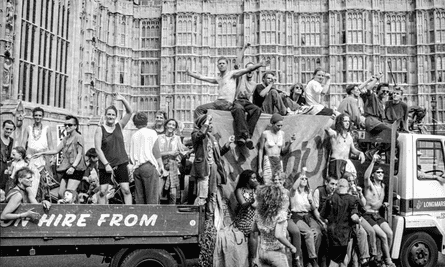
When, after the second reading, the bill entered its committee stage, Jim Carey was there every day. A musician who had been squatting and putting on free arts events for a decade, he was so disgusted by the unchallenged vilification of squatters that in 1992 he took a night-school journalism class and launched a magazine, Squall, to provide a counter-narrative. He enjoyed cycling to parliament each day to show that this squatter with long hair and earrings knew every detail, but was shocked to discover that many MPs didn’t. “I kept wanting to stand up and correct them because their information was wrong. I could see MPs doing crosswords. It was a bulldozer, this law, and nothing was going to stop it politically.”
On 13 April, the CJB passed its third reading in the Commons, with Labour abstaining again. In its entirety, the bill was too big to fail. Now the more realistic goal of the Commons amending the worst sections of part V had been dashed. As the Labour peer Lord McIntosh later said in the Lords, if he looked soft on squatters: “Mr Tony Blair would have me shot at dawn.”
Did the activists truly believe they could win? “Oh God, yeah,” says Zobel. “It was a cultural phenomenon. I don’t think we had any hope in the mainstream media or political parties, but we definitely thought we could stop it.”
“Not at all,” counters Alan Lodge. “But it was still important that you could say you did your best. To curl up in a ball and say, ‘It’s so awful, I can’t do anything,’ is the worst thing that you can do.”
As the anti-CJB campaign gathered steam, the Advance Party’s Staunton proposed something surprisingly conventional: a march from Hyde Park to Trafalgar Square on May Day. “We all thought: well, marches never get any coverage unless something goes wrong, but Debbie was very convincing,” Berens recalls. “She said: ‘Let’s bring the free party scene into central London and make it a massive celebration and galvanise the movement.’”
What took place on that gloriously sunny day was a new kind of protest: a 20,000-strong rainbow parade, dancing from Hyde Park to Trafalgar Square, drawing in many people who had never been on a demonstration before. “THEY WANNA FIGHT,” read one giant banner, “WE WANNA DANCE.” But the audiovisual spectacle was more eloquent than words. With an ethos of “party and protest”, it was a cheerful pageant of the lifestyles the bill sought to extinguish – DIY culture with its tailfeathers out. “Because music was now being criticised, music was protesting,” Lodge reasons. “It was much more of an entertainment than a po-faced, down-with-that protest.”
“There was a real sense of camaraderie and effervescence,” remembers Lol Hammond. “There was a lot of pride in the dance community. I think we were seen as a bunch of smiley-T-shirt nutters, off our faces.”
The demonstration passed peacefully – with one notable exception. “You had to try quite hard to be arrested,” Harry Harrison says with a roguish grin, “but we took our clothes off in the Trafalgar Square fountains, and that did it.” He ended up in a police cell, roaringly drunk and dripping wet. “Party and protest. We did both in equal measure.”
The CJB was expected to pass before the summer recess, but was delayed by amendments in the Lords. “So we had that whole summer we hadn’t thought we’d have,” says Berens. In one of many nonviolent direct actions, she led a group of Freedom Network women who locked themselves to the parliament railings dressed as suffragettes. Plans for the next march, however, were fractious.
One day, four visitors went to CoolTan saying they were from the Coalition Against the Criminal Justice Bill and that they had the support of Tony Benn and the trade unions. “We know all the networks, so who the fuck are you?” Berens replied. She soon learned that the coalition was a front for the Socialist Workers party (SWP), which had no history with the movement. “My views have softened a lot over the years,” says Chris Cocking, “but at the time we viewed the SWP as a Trotskyist, entryist, parasitic organisation intent on taking over campaigns for their own agenda. That did cause a lot of bad feeling.”
Whether the SWP organised the 24 July march or just co-opted it is unclear, but it was certainly more conventional than the first, with a sea of “Kill the Bill” placards. It was also three times bigger. Amid a largely peaceful day, there was a flammable encounter at Downing Street just after 3pm. A handful of protesters climbed the gates and started shaking them, eye to eye with a phalanx of armed police; and mounted police charged into the crowd.
Jim Carey saw the demonstrations primarily as promotional tools: streets thronged with colourful young people forced the media to pay attention. He became a “media tart” and versatile public speaker, from Newsnight to nightclubs. “We were celebrating the culture that we’d built outside of Thatcher’s dream,” he says, “and that celebration was a dissenting voice.” A photograph of ravers in Trafalgar Square graced the cover of the New Statesman, with an essay by CJ Stone about the “new politics”.
Meanwhile, dance music artists joined the Levellers in getting the CJB into the music press. The Prodigy’s chart-topping Music for the Jilted Generation was effectively an anti-CJB concept album: “Fuck ’em and their law!” was the refrain of one track. Autechre programmed the rhythms of Flutter so that “no bars contain identical beats and can therefore be played … under the proposed new law”, while Orbital’s Are We Here? (Criminal Justice Bill?) was an eloquent four minutes of silence. In October, Lol Hammond orchestrated a fundraising single called – what else? – Repetitive Beats. “You do think you can change things,” he says. “But I remember people saying, ‘Why are we getting so political?’ as well. They chose dance music as a means of escapism and all of a sudden they had to think about politics.”
By then, though, time was running out: the bill was scheduled to return to the Commons on 19 October. The mood going into the third and final march on 9 October was therefore angrier and more urgent. “There was an inexorable logic to the bill happening so people probably felt more desperate,” says Puddephatt. This time there were as many as 100,000 protesters, but they were not of one mind. In July, Freedom Network flyers had cheerfully advised: “Keep it fluffy” (in the sense of nonviolent direct action). Now the anarchist group Class War, who disdained the anti-CJB campaign as uselessly soft, retaliated with its own slogan: “Keep it spiky.”
Things did get spiky when two sound systems tried to get into Hyde Park. “The idea was – at least in my head – that we could hold Hyde Park for a week or so and have our festival,” says CJ Stone. Eventually, the police let them in, but what seemed to avert a showdown only postponed it. Late in the afternoon, when most people had gone home, mounted police charged the stragglers. “No warning,” says Berens. “They sent people flying. It was so shocking and surreal it was hard to believe it had actually happened. This police helicopter came over saying: ‘Everybody get out of the park!’ And then it all exploded, with riot vans charging up and down Park Lane, cops waving their shields: ‘Get out! Get out!’”
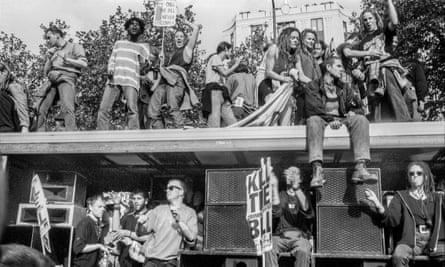
The Daily Mail called it Revolt of the Ravers. By the end of the day, there had been 39 arrests, 53 shop windows smashed and 28 injuries. “It wasn’t as bad as the papers made out,” Harry Harrison protests. “I’ve seen a lot worse. On the riot-o-meter, I’d only give it a three or four.” For Chris Cocking, it was a radicalising experience: “A lot of people, myself included, went from quite naive, pacifistic, hippyish protesters to hardcore Class War anarchists.”
Due to the publicity, Berens was invited to debate the CJB’s implications with Tory MP Nigel Evans on BBC One’s Kilroy and the scowling interrogators of Radio 4’s Moral Maze. “Suddenly, we were flavour of the month,” she says ruefully, “but by then it was too late to do anything about it.” The Criminal Justice and Public Order Act (CJA) received royal assent on 3 November.
“Don’t keep calling it the criminal justice bill,” Alan Lodge scolds me at one point. “It’s an act! We lost.”
On one level, the anti-CJB campaign experienced unmitigated defeat. The CJA marked dance music’s transition from a subversive force into a respectable pillar of the night-time economy. A thwarted attempt by Debbie Staunton’s new group United Systems to stage “the Mother”, a massive, defiant free party on 7 July 1995, led to three members of the Black Moon sound system in Derbyshire becoming the first people convicted under the “repetitive beats” clause. They were fined and their sound system destroyed. More often, the mere threat of arrest was enough to quash a party. “The festival culture they tried to criminalise has gone mainstream,” says an activist calling himself Phoenix, who was a 24-year-old organiser at the Rainbow Centre. “But they now put a big fence around them and charge people £250 to get in.”
The act also made life intolerably difficult for travellers. “It made a bad situation unmanageable,” says Puddephatt. The eviction of Claremont Road in November 1994 eliminated another outpost of DIY culture. In his book Party Lines, Ed Gillett calls the CJA “a funeral knell for British counterculture”.
For many activists, though, the CJA wasn’t the end at all. The day after it became law, five campaigners climbed on to the roof of Westminster Hall and unfurled a banner reading “Defy the CJA”. More than 200 protesters, including Phoenix, occupied the garden of Michael Howard’s country house in Kent and staged a mock trial. “The message was defy, defy, defy,” says Berens. “We were all prepared to go to prison.”
The immediate consequences, however, were not as bad as the campaigners had feared. By the start of 1997, there had been only 470 prosecutions for aggravated trespass and 42 for trespassory assembly. The utopian, carnivalesque energy of the 1994 protests flowed into the guerrilla street parties of the relaunched Reclaim the Streets, which began in May 1995 and escalated towards a symbolic return to Trafalgar Square to mark the general election two years later. Protesters blocked off streets to cars and installed climbing frames, bouncy castles and sound systems. On the M41 in July 1996, activists hidden beneath the giant skirts of stilt-walkers dug holes in the tarmac to plant trees. “The free festivals stopped, but now we had these urban festivals of resistance in the middle of London,” says Berens.
The road protests got bigger, too. The 1996 occupation against the Newbury bypass, where protesters set up home in trees and tunnels, made 23-year-old Dan “Swampy” Hooper a household name. “They were selective,” says Cocking. “The idea that they would mass-arrest everybody didn’t come to pass.” All the existing projects went ahead, but the cost of security, damage and delays hobbled the Conservatives’ £23bn road-building programme before the Labour government junked it altogether. As Cocking puts it: “There are noisy defeats and quiet victories.”
The protests were not always harmonious. As with all non-hierarchical movements, there were many disagreements about strategy. Drug addiction and mental illness caused friction, too. And there was growing concern about undercover police. “We all joked about it,” says Phoenix. “We assumed our phones were bugged. We knew there was infiltration, but we tried not to get too paranoid.” Shane Collins has participated in the government inquiry into “spy cops” who used false identities to embed themselves in groups such as Greenpeace and Reclaim the Streets. Two of them, Jim Boyling and Andy Coles, were men he knew and trusted.
There is growing interest in this period and what it meant. Mark and Harry Harrison have published memoirs and appear in a new documentary, Free Party: A Folk History. Berens, co-founder of South East London Community Energy and a volunteer for Greenpeace, is writing her own memoir of a life in protest. Everyone I speak to sees the anti-CJB campaign as one stop on a continuum. Reclaim the Streets and the road protests rolled into Peoples’ Global Action in the late 1990s, the Camps for Climate Action in the 2000s, Occupy in 2011 and, more recently, Extinction Rebellion and Just Stop Oil. Figures from 1994 have played a part in all of these. They sit on councils, work at charities and train young activists. The cliche of hippies ageing into yuppies does not seem to apply here. “I haven’t stopped since 1991,” says Phoenix. “All these movements flow into each other. I still want to be active when I’m 70.”
Shane Collins, now a Green party councillor in Somerset, argues that the DIY coalition of the mid-90s was the cradle of modern environmentalism: “We lost a few battles but we won the war as regards the road protests, GM foods, new coal-fired power stations, fracking.” Zobel, now an activist and journalist in Brazil, agrees: “All the stuff that’s become mainstream in the UK in the last five years was being discussed earnestly around campfires 30 years ago.”
There have been setbacks, too. The Police, Crime, Sentencing and Courts Act 2022 placed even more restrictions on protest and trespass than the CJA, bringing “Kill the Bill” placards back on to Britain’s streets. Yet the veterans of 1994 fight on, in myriad ways. “I’m a perpetual optimist, so, yes, I thought this was going to change the world,” says CJ Stone. “In a way, it did.”
Source: theguardian.com


